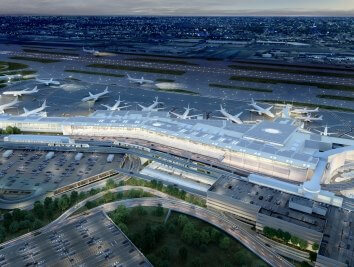JFK Terminal 6: Choreographing Beauty in Aviation
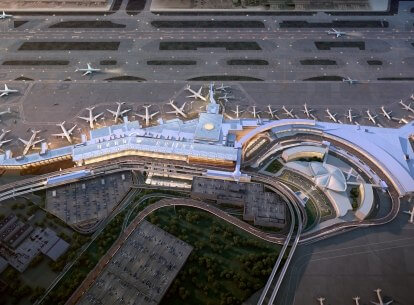
As the architect on JFK’s new Terminal 6, Corgan was charged with creating a 1.2 million square foot terminal that is distinctively New York and a global hub for the world-class airport.
Corgan’s Vice President and Aviation Studio Design Director, Barry Yanku, shares the process and inspiration for delivering a project that not only technically enhances the terminal infrastructure but also creates a striking destination that takes travel to new heights.
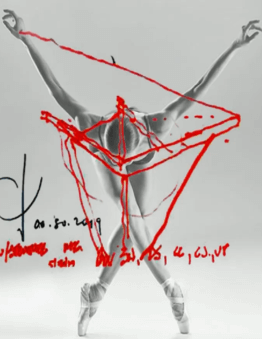
Dancing and buildings are the two primary and essential arts. The art of dancing stands at the source of all the arts that express themselves first in the human person. The art of building, or architecture, is the beginning of all the arts that lie outside the person; and in the end, they unite.
Choreographing Beauty in Aviation
I began studying modern dance in the evenings and weekends while working at my first architectural practice in New York, and the synergy of dance and design has informed the focus of my design exploration since. The choreographed design uses kinetic principles as part of the design gestalt and takes the process off the static paper and into a virtual world which relies on three-dimensional modeling as its primary vehicle.

In the dance studio, I began my lifelong search for the integration of dance and architecture and became a student of the “Limon Technique,” a modern language derived from the body, gravity, and breathing. I learned the natural forces on the dancers and form, the ebb and flow of our daily breathing, the nature of gravity on moving through space, and the musicality of dance.
Over the course of my career, I’ve been mentored by and worked alongside the titans of dance and architecture — discovering the transformative ideas of space and motion that continue to inspire my work today.
Design Inspiration
Much like a musical dance score, the design process for JFK Terminal 6 was developed in a sequence. The elements, forms, and movements are articulated in the design of the fundamental underpinnings of the space —reinforced in the sequence cable stay structures, the rhythm of New York, and the movement of passengers.
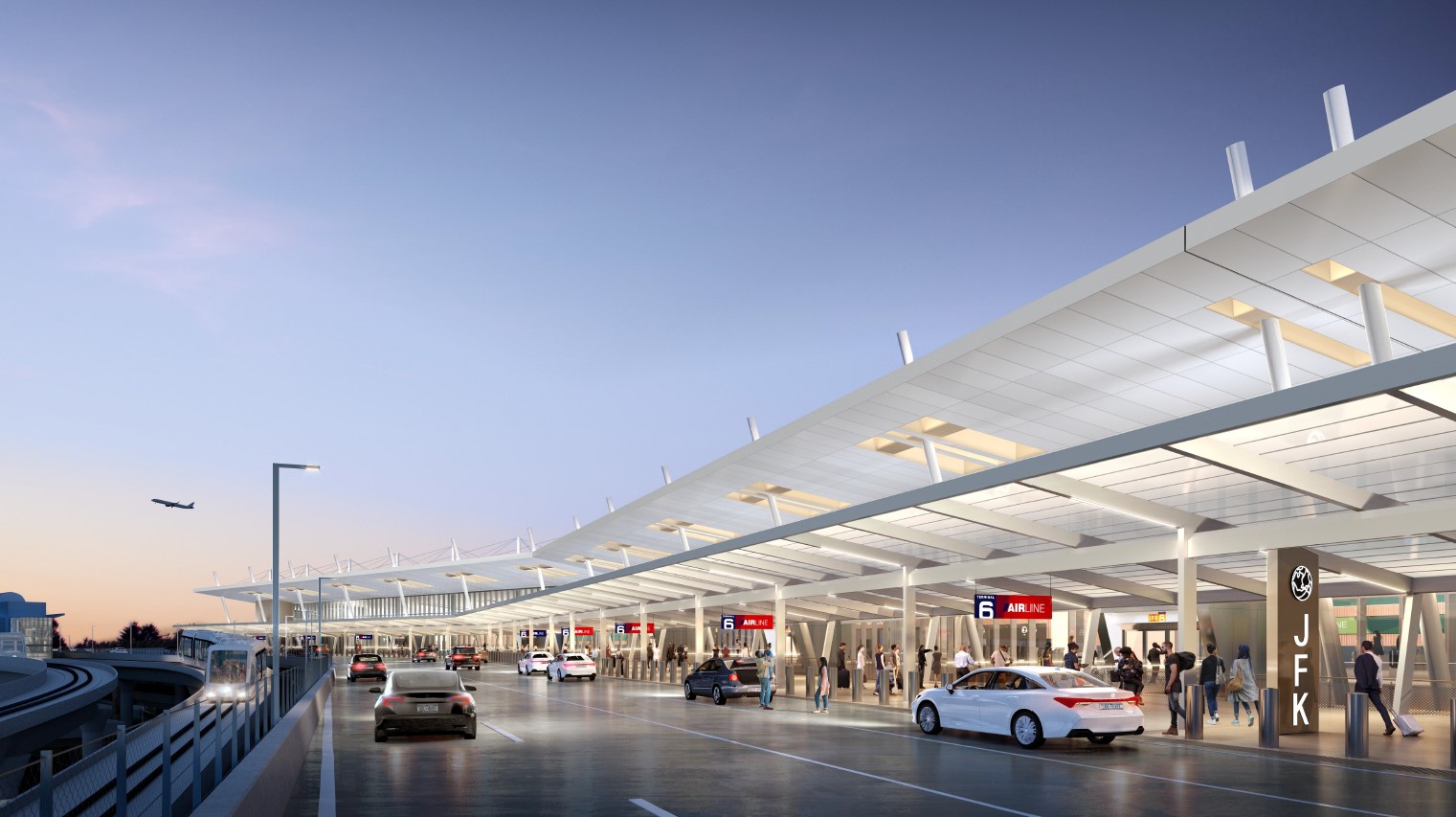
The dance for JFK Terminal 6 is cohesively threaded by the wing-like structure. At each phase of the design process, much like choreography, we considered what the space would feel like and created special moments along the way. Throughout the journey, passengers find a variety of memorable moments — vibrant and dynamic and at times, smaller and subtle — creating a mix of soaring roof blades and triple-height volumes, angled balconies, and quieter, and intimate holding rooms.
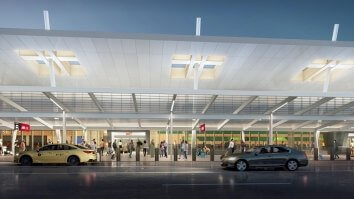
The Grand Crescendo: The Front Entry
The single-sloped roof and cable structures evoke a sense of flight and reference the iconic 1955 building at the TWA entrance. The wing structures and single post columns reinforce the guiding inspiration in V-shaped rods and catenary cables--marking the entrance with a grand civic gesture.
The sloping roof structure reaching over the curbside and entry bridges guides passengers into the Check-In Hall. Skylights punctuate the cantilevered roof to invite natural light and underscore our connection to the skies. Stand-alone translucent canopies along the walkways echo the roof structure and shelter passengers from the elements.
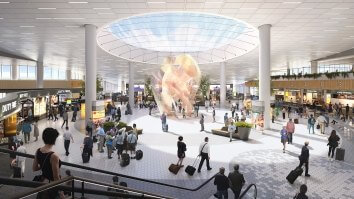
The Oculus
Scenes are choreographed as a series of discovery moments. At the entrance, an ethereal oculus opens to the sky celebrating a sense of arrival. The oculus is a product of parametric modeling and after final approval was used to create a second, larger 70-foot oculus in the East Arrivals Hall.
From a dancer’s perspective, it is a dramatic moment in the performance announcing the main stage for terminal functions including the main piazza, circulation to lounges, ground transportation, and concessions areas.
Choreographing the Future of Travel
Coordinating a variety of movements and details is a challenge for an aviation project of this scale. Our designers not only offer a comprehensive, deep bench of expertise but do so as a synchronized team—intuitively attuned to each other and empowered to bring their best and highest talents to the project.
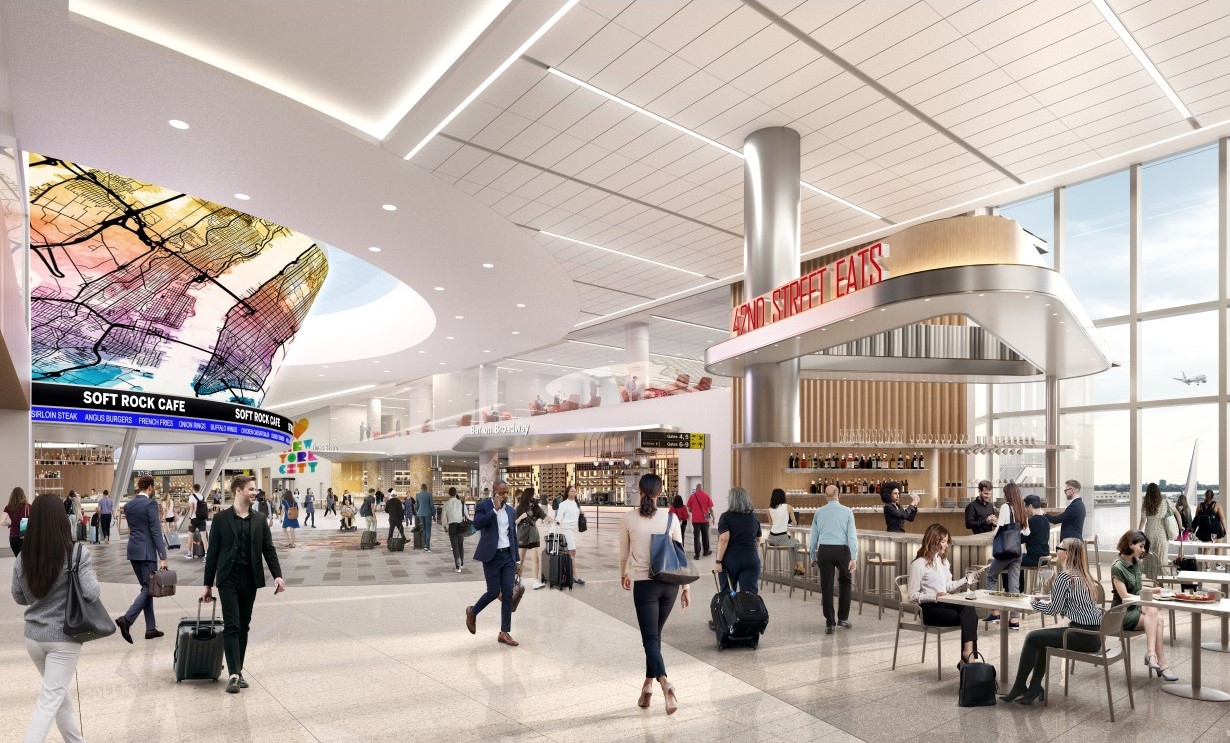
Recently breaking ground, the project is scheduled to open its first gates in 2025. Our focus is to hold tight to our vision and execute this project in a handsome manner. I’m happy to say Corgan is leading the terminal design effort, and personally, I look forward to the day I can dance through this space.





